click on images to enlarge (except mobile phones)

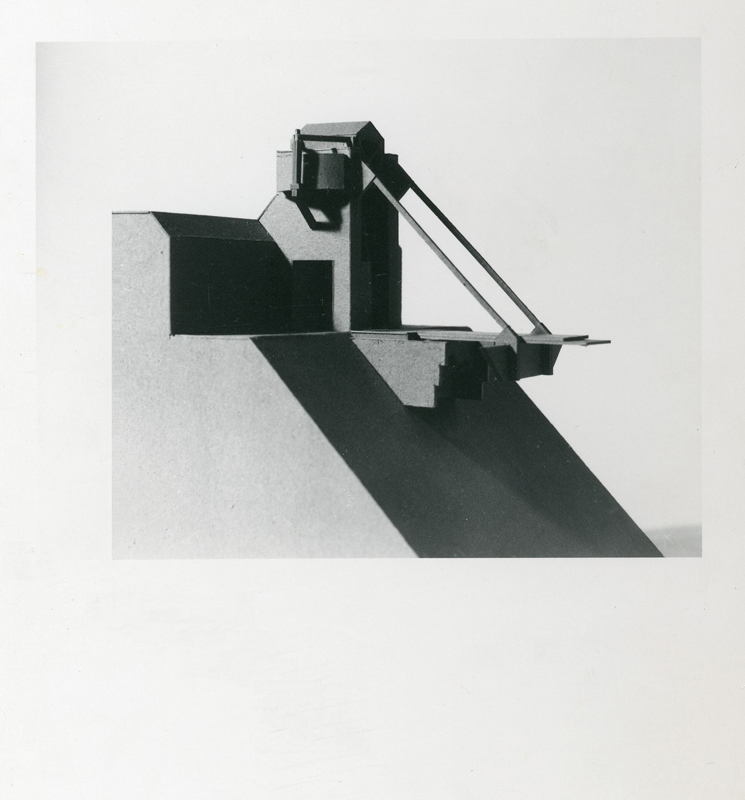
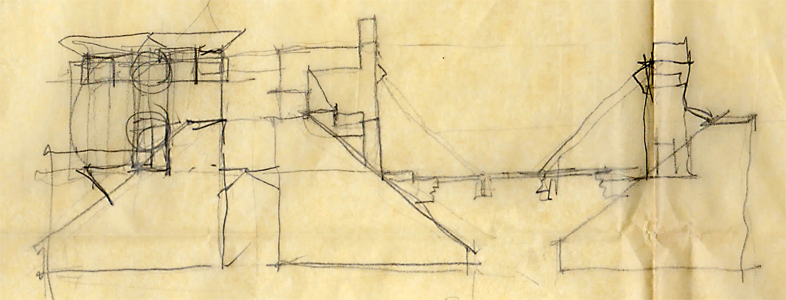

Abstract Artist Working in the Realm of Digital Media
Section through Dome & Geometric Analysis of
the Masjid I Jami Mosque
click on images to enlarge (except mobile devices)
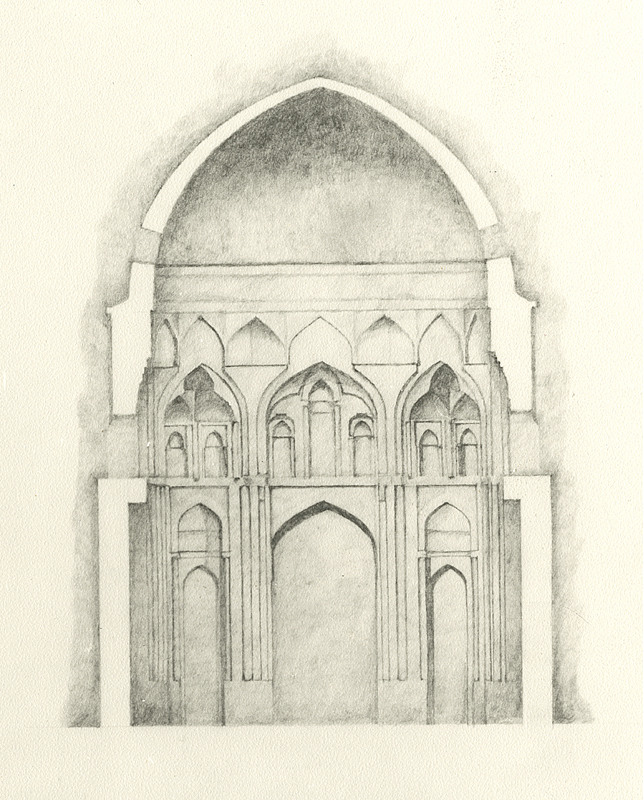
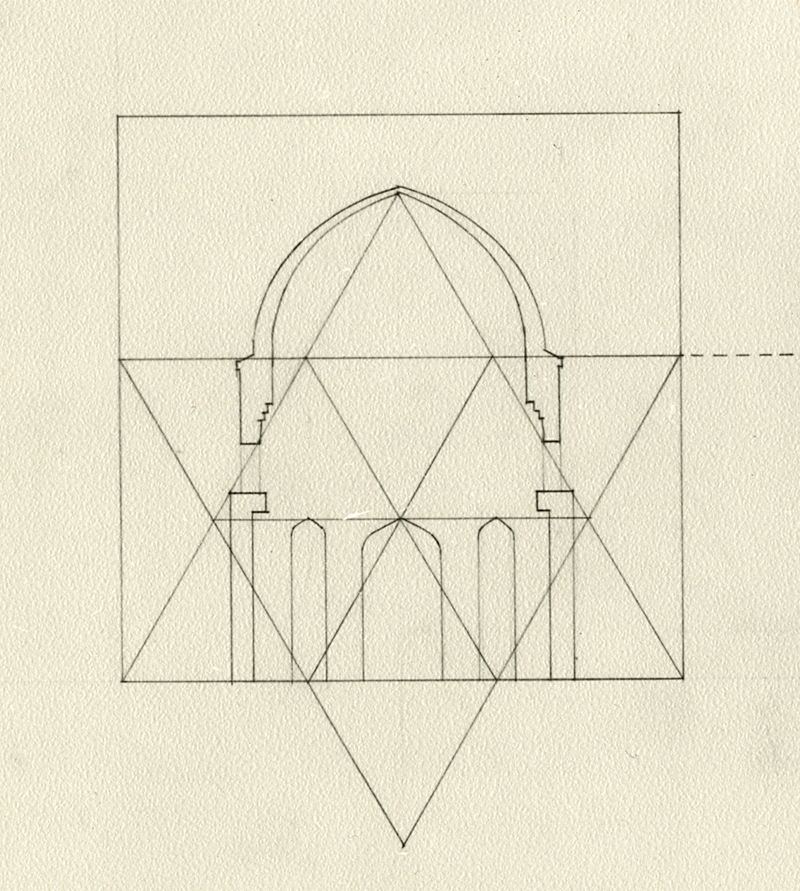


The most significant work Of Islamic Architecture that survives is the Masjid-i-Jami in Isfahan Iran. This mosque was initially built by the early Muslims who arrived in the first century after the Hijra. The Abbasids rebuilt it in 840-41 CE . The Buyids, who established the first local dynasty, enlarged it between 908-32 CE.
Above is my drawing of a cross section through the dome with three geometric sketches illustrating the proportion of parts and below are sketches studying the geometric proportional systems that delineate the proportion of it’s parts. Also, using the proportions of the different parts to each other, I prove mathematically that the golden ratio was the organizing principle.
Sketches – Understanding the Underlying Geometric Proportional Systems
click on images to enlarge
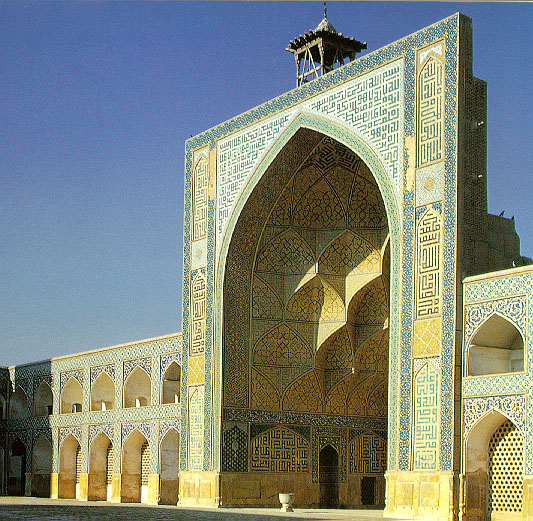
The Masjid I Jami Isfahan
Related to my Islamic studies were explorations of my own geometric ideas influenced by what I was learning about in the Islamic creative tradition. The following are studies of patterns I created using and rotating the square. They were done on a Hewlett Packard main frame computer using an early CAD software program.
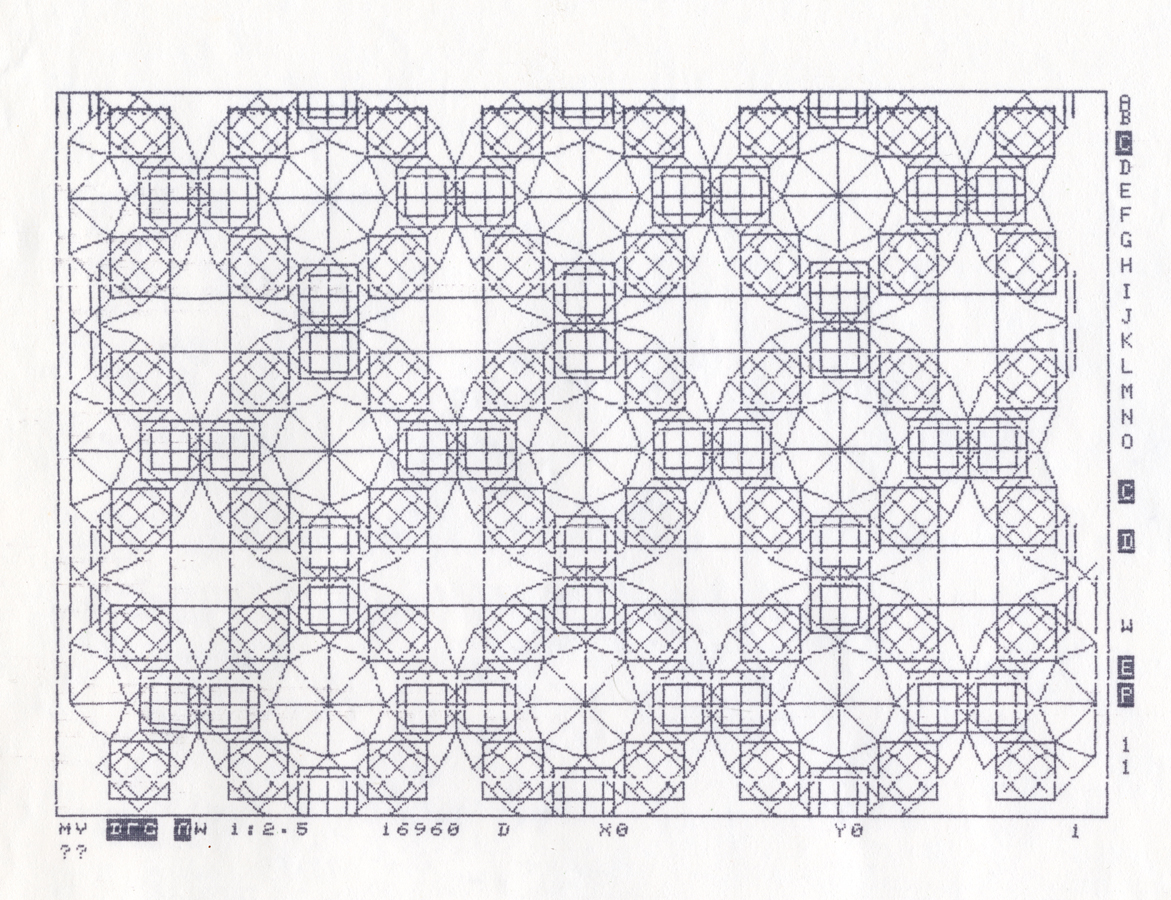
Health/Gym Complex
Pratt, 1985
Scanning some projects from my past. Another Pratt project. The Mexican Architect Enrique Norton, founder and principle of Ten-Arquitectos, was my studio professor for this one.
Enrique Norton asked us to look at structures not designed by architects but by engineers; that these structures epitomized modernity. We were to choose a structure and create a transformation of it into a conceptual building. But first we were to document the structure and draw it as a way of understanding it’s structure and how it was built.
I chose the Roosevelt Island Bridge for my transformation into a building; my building being a health/gym complex. Roosevelt Island is a narrow island in New York City’s East River. It lies between Manhattan Island to its west and the borough of Queens on Long Island to its east. The bridge is a lift bridge (center section lifts up to allow large vessels through) and connects Roosevelt Island to Queens.
I chose to put my building on Pier 51 on the Hudson at West Street and 13th Avenue. This pier was demolished and replaced with what is now called Pier 51 Playground. The irony is that the Chelsea Piers a little farther north was transformed in the late 90’s into what is now the Sports Center at Chelsea Piers.
Norton gave us a format; 11 x 17 strathmore paper. All drawings were to be done in ink. Ink is so unforgiving. A mistake and you have to start the sheet over. Yes the good old days before Computer Aided Design & Drafting (CADD).
click on images to enlarge
I thought hard about the project my Pratt studio professor Hanford Yang handed me, to design a house that when completed felt like it belonged on a chosen imaginary site. But I wanted to do more than just that. I wanted the house to tell a story of why it belonged where it was placed.
I find a kind of freedom in my art that helps me escape pain. As I look back on this project I realize that I was doing the same thing with my architecture. The curvature of my spine in my twenties caused many episodes of pain. The conception of this house, about the desire to escape gravity, TO FLY, TO BE FREE, but not being able to, always tethered to earth, was the story I was telling and a metaphor for the human condition. But perhaps subliminally, it was a metaphor for my deformed spine, wishing I could escape it. Below is the house’s story. Scroll down further to see the drawings and model.
I was honored when this project was selected among only four student projects to be in the book published by Rizzoli FORM; BEING; ABSENCE, Pratt Journal of Architecture, 1988
Click here to see the book on Pratt’s website
click on images to enlarge (except mobile devices)
Site Plan & Floor Plans
Axonometric, Section & Elevation
Model
From the Book “Form; Being; Absence – Pratt Journal of Architecture
Published by Rizzoli 1988
Front Cover of “Form; Being; Absence – Pratt Journal of Architecture
Published by Rizzoli 1988